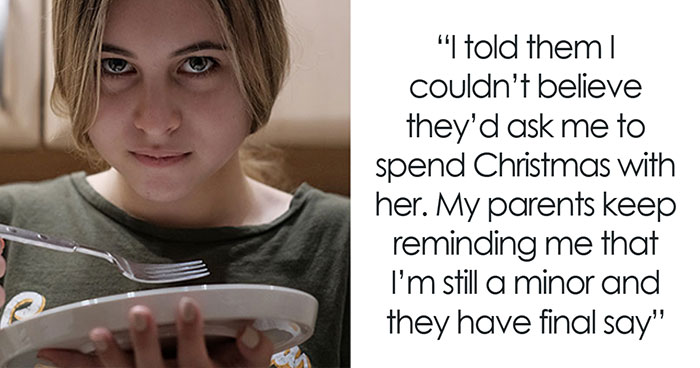
Sea Turtle Named Lou Learns To Swim Again After Losing Two Flippers In Fishing Nets
Cairns Turtle Rehabilitation Centre (CTRC) is a non-profit voluntary organization in Australia dedicated to the rehabilitation of sick and injured turtles. In 2015, its members learned about an olive ridley sea turtle found in discarded fishing nets (ghost nets). Immediately, they decided to take the little fella in and named him Lou.
“Lou had his front left flipper missing, worn off from trying to escape from the net,” Jennifer Gilbert, the co-founder of CTRC, told Bored Panda. “He was picked up by the rangers who drove him down to Weipa and he was transported to Cairns via Qantas Link who sponsored his flight.”
After being taken to Marlin Coast Veterinary Hospital, Lou was examined by Dr. Rod Gilbert, who found his back right flipper was too badly damaged and could not be saved.
“The decision was to amputate that flipper which left him with only 2 of them, luckily opposing,” Gilbert recalled. “There was always hope he would recover and be returned back to the wild where he belongs. Being an adult male olive ridley, it was important that he went back.”
And he just did! Lou proved to be a real fighter and learned how to swim again, convincing his rescuers to release him back into the wild.
More info: cairnsturtlerehab.org.au | Facebook
Image credits: cairnsturtlerehab
Image credits: cairnsturtlerehab
Image credits: cairnsturtlerehab
Lou’s recovery was long, but the critter was determined to get back on his flippers. “During that [time], he worked out,” Gilbert said. “He could use his long 15 cm (almost 6 inches) tail as his other rudder. He struggled for a long period of time to get his balance, but after a lengthy rehabilitation, he was diving, eating at the bottom of the tank, and moving at speed if required.”
Image credits: cairnsturtlerehab
Image credits: cairnsturtlerehab
Image credits: cairnsturtlerehab
Olive and Kemp’s ridleys are the smallest of the sea turtles, weighing up to 45 kg (100 pounds) and reaching only about 60cm (2 feet) in shell length. The olive ridley has a slightly smaller head and smaller shell than the Kemp, though.
Even though the olive ridley is widely considered the most abundant of the marine turtles, by all estimates, it’s in trouble. Its numbers, particularly in the western Atlantic, have really declined.
Many governments have protections for olive ridleys, but people are still taking their eggs and slaughtering nesting females for their meat and skin. Fishing nets also take a large toll, frequently snagging and drowning these turtles. Just what almost happened to Lou.
Image credits: cairnsturtlerehab
Image credits: cairnsturtlerehab
At the time of his discharge, Lou was flown back to Weipa via Qantas Link and with a Napranum Ranger. “We drove him up to Pennefather Beach Cape York where he was released in the beautiful clear water,” Gilbert said. “This area was deemed safe for him to orientate back into the wild.”
Gilbert thinks the main things that allowed Lou to recover were the dedication of the volunteers looking after him as well as the community and various companies all stepping forward to help where they could. And, of course, Lou’s determination and resilience to survive. “Everyone that met Lou immediately fell in love with his personality,” she said.
Image credits: cairnsturtlerehab
Image credits: cairnsturtlerehab
Lou took a little while to orientate and then he was off, diving. The turtle has a satellite tracker on him to monitor his journey back into the wild. Actually, you can fire up Reef Tracks and find Lou on the map and follow his amazing journey. How cool is that!
Image credits: cairnsturtlerehab
People are really happy for Lou
If you like the work the Cairns Turtle Rehabilitation Centre is doing, please consider buying its book or making a donation to help the organization
1k+views
Share on FacebookNormally I'm not a fan of keeping wild animals in captivity, but I think poor Lou would be a prime example of an animal that should be in a rescue center and not released back into the wild. I also think his tracking device is adding weight, increasing drag, and again makes it easier to get caught between objects, nets, and stuck in crevices.
I am curious about whether the tracking device adds any weight-- I am sure that the conservationists and volunteer would take that into account when releasing an animal back into the wild. The conservation centre that saved Lou and worked to release him back into the wild has some interesting information about tagging and its benefits. They explain that some of the tags are satellite trackers that are pre-programmed to pop off at a specific time. The tags are then collected by conservationists and scientists: https://citizensgbr.org/explore/reef-tracks/ctrc-lou It looks like Lou is doing pretty well as he's already swam 118 Km (around 73 miles)!
Load More Replies...Normally I'm not a fan of keeping wild animals in captivity, but I think poor Lou would be a prime example of an animal that should be in a rescue center and not released back into the wild. I also think his tracking device is adding weight, increasing drag, and again makes it easier to get caught between objects, nets, and stuck in crevices.
I am curious about whether the tracking device adds any weight-- I am sure that the conservationists and volunteer would take that into account when releasing an animal back into the wild. The conservation centre that saved Lou and worked to release him back into the wild has some interesting information about tagging and its benefits. They explain that some of the tags are satellite trackers that are pre-programmed to pop off at a specific time. The tags are then collected by conservationists and scientists: https://citizensgbr.org/explore/reef-tracks/ctrc-lou It looks like Lou is doing pretty well as he's already swam 118 Km (around 73 miles)!
Load More Replies...
 Dark Mode
Dark Mode 

 No fees, cancel anytime
No fees, cancel anytime 







































































131
7